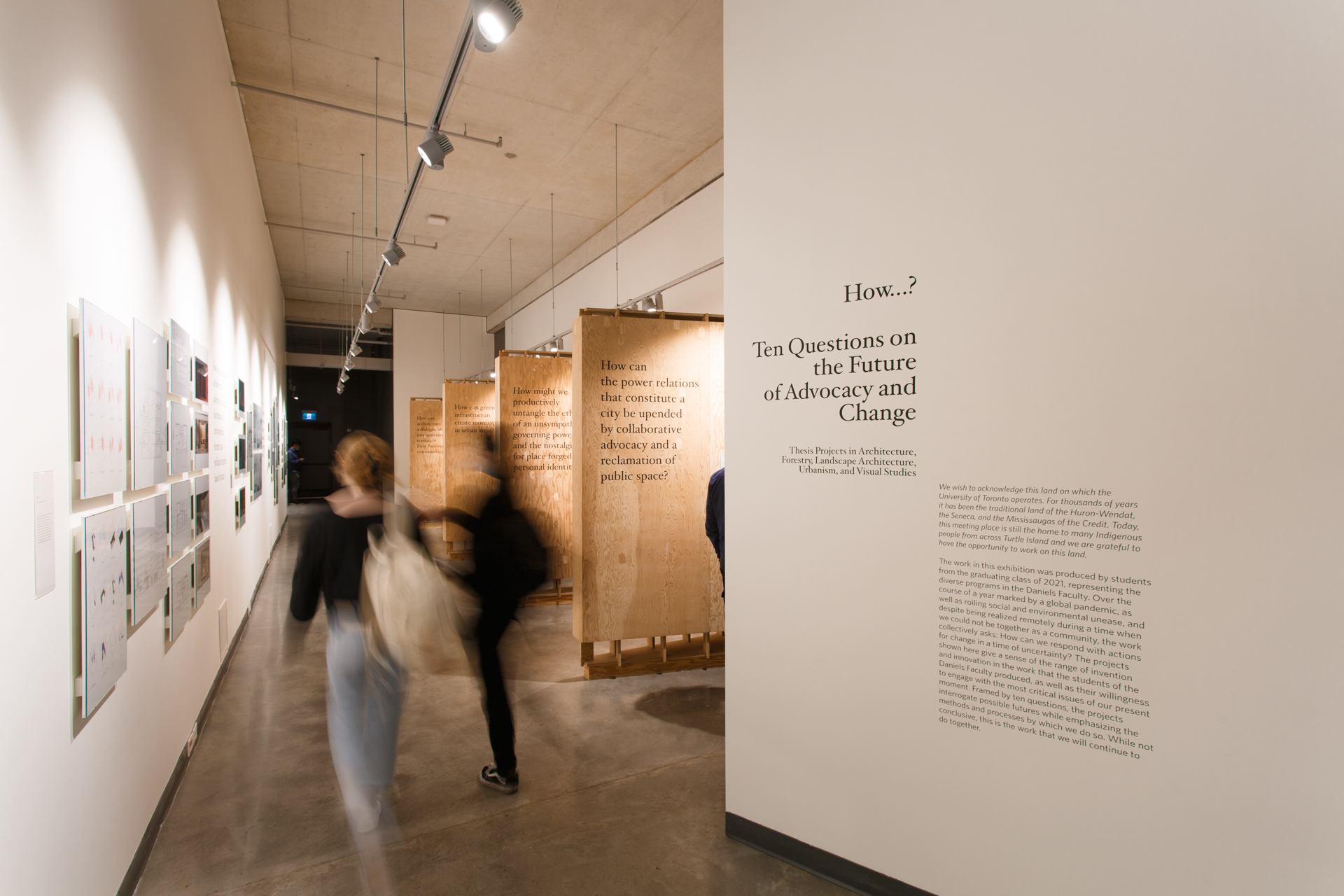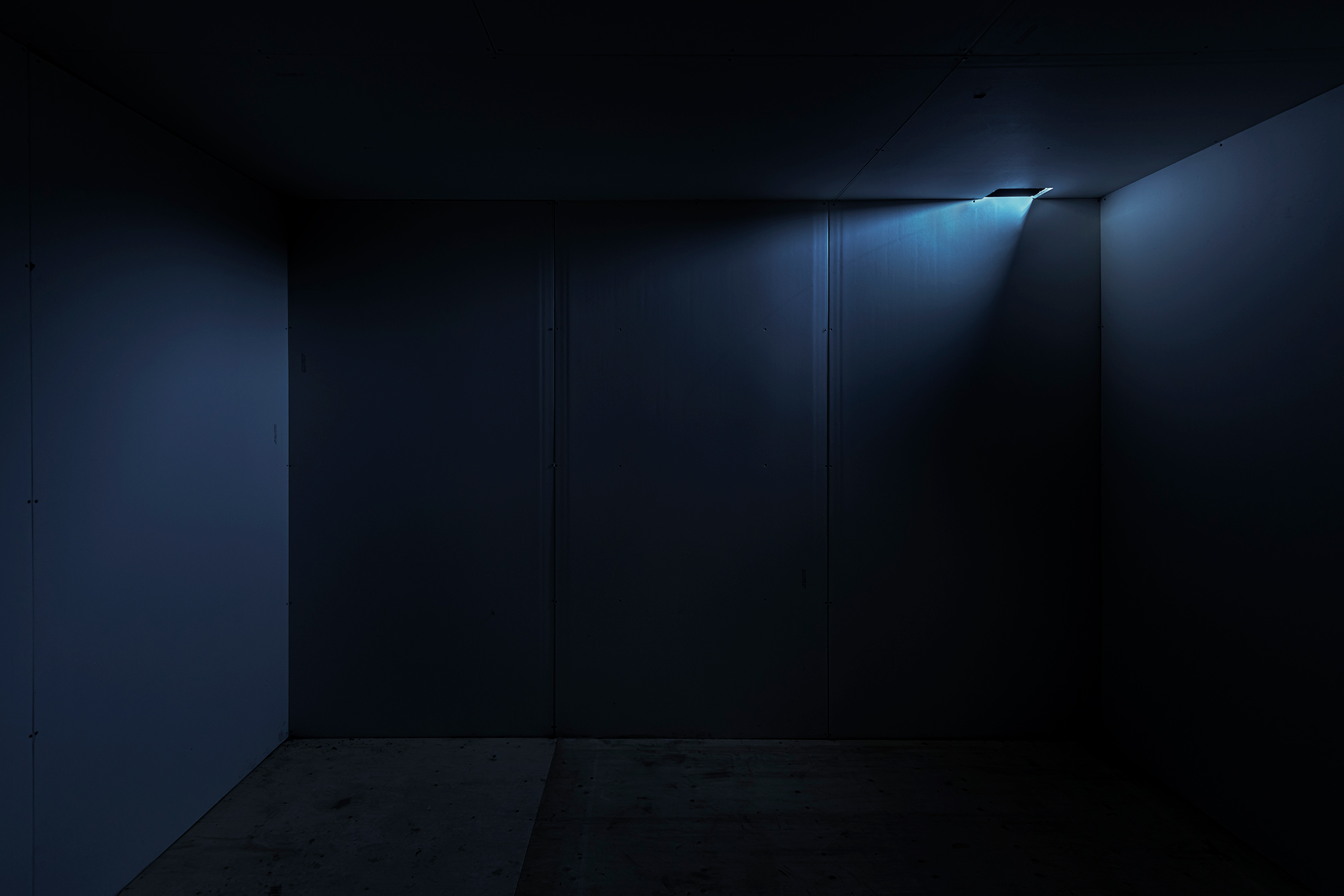ᐊᖏᕐᕋᒧᑦ / Ruovttu Guvlui / Towards Home
-
Architecture and Design Gallery
Gallery Address
Architecture and Design Gallery
Daniels Building
1 Spadina Crescent
Toronto, Ontario M5S 2J5
NEW Hours of Operation
Monday: 9:00 a.m. - 7:00 p.m.
Tuesday: 9:00 a.m. - 7:00 p.m.
Wednesday: 9:00 a.m. - 5:00 p.m.
Thursday: 9:00 a.m. - 7:00 p.m.
Friday: 9:00 a.m. - 7:00 p.m.
Saturday and Saturday: Closed
ᐊᖏᕐᕋᒧᑦ / Ruovttu Guvlui / Towards Home is on view in the Architecture and Design Gallery at the John H. Daniels Faculty of Architecture, Landscape and Design until March 22, 2024.
The Indigenous-led exhibition organized by and first presented at the Canadian Centre for Architecture in Montreal, was co-curated by Joar Nango (a Norway-based Sámi architect and artist), Taqralik Partridge (Associate Curator, Indigenous Art - Inuit Art Focus, Art Gallery of Ontario), Jocelyn Piirainen (Associate Curator, National Gallery of Canada) and Rafico Ruiz (Associate Director of Research at the CCA).
The exhibition showcases installations by Indigenous designers and artists, reflecting on how Arctic Indigenous communities relate to land and create empowered, self-determined spaces of home and belonging. Through the exhibition, as well as its accompanying publication and programming, ᐊᖏᕐᕋᒧᑦ / Ruovttu Guvlui / Towards Home aims to have long-term impact, opening new forms of dialogues and ways of thinking about Northern Indigenous practices of designing and building that are not normally considered in the canons of architecture.

Work on view includes Taqralik Partridge and Tiffany Shaw’s The Porch, a transitional space unique to Northern living that welcomes Indigenous visitors into an institutional setting that has historically excluded them. Geronimo Inutiq’s I’m Calling Home presents a commissioned radio broadcast that recalls the central role that radio plays in both connecting Inuit communities and expediting colonialism. Nuna, an installation by asinnajaq (in conversation with Tiffany Shaw), is a tent-like structure that invites both sharing and reflection while evoking the four elements. Offernat (Votive Night) by Carola Grahn and Ingemar Israelsson is an altar featuring a birch burl that evokes the burning of Sámi drums during Christianization in the 1700s.

The exhibition also facilitated the Futurecasting: Indigenous-led Architecture and Design in the Arctic workshop (co-curated Ella den Elzen and Nicole Luke) that brought together nine emerging architectural designers and duojars (craftpeope) to convene across Sapmi and Turtle Island to discuss what the future of design on Indigenous lands might become.
The full list of contributors includes: asinnajaq, Carola Grahn and Ingemar Israelsson, Geronimo Inutiq, Joar Nango, Taqralik Partridge, and Laakkuluk Williamson Bathory. The original exhibition design was by Tiffany Shaw, Edmonton with graphic design by FEED, Montréal.

Land Acknowledgement
We wish to acknowledge this land on which the University of Toronto operates. For thousands of years, it has been the traditional land of the Huron-Wendat, the Seneca, and the Mississaugas of the Credit. Today, this meeting place is still the home to many Indigenous people from across Turtle Island, and we are grateful to have the opportunity to work on this land. The land of 1 Spadina Crescent has been the home and an important trail of the Mississaugas of the Credit, the Anishinaabe, the Chippewa, the Haudenosaunee and the Wendat peoples. Spadina is synonymous with Ishpadinaa, meaning “a place on a hill” in Anishinaabe.
Image credits: 1) The Porch, Taqralik Partridge and Tiffany Shaw. ᐊᖏᕐᕋᒧᑦ / Ruovttu Guvlui / Vers chez soi / Towards Home exhibition view, 2023. Photo by Scott Norsworthy. 2) Nuna, asinnajaq. ᐊᖏᕐᕋᒧᑦ / Ruovttu Guvlui / Vers chez soi / Towards Home exhibition view, 2023. Photo by Harry Choi. 3) Offernat (Votive Night) by Carola Grahn and Ingemar Israelsson. ᐊᖏᕐᕋᒧᑦ / Ruovttu Guvlui / Vers chez soi / Towards Home exhibition view, 2023. Photo by Scott Norsworthy. 4) I’m Calling Home, Geronimo Inutiq. ᐊᖏᕐᕋᒧᑦ / Ruovttu Guvlui / Vers chez soi / Towards Home exhibition view, 2023. Photo by Scott Norsworthy. 5-6) ᐊᖏᕐᕋᒧᑦ / Ruovttu Guvlui / Vers chez soi / Towards Home exhibition opening. Photos by Harry Choi.

























